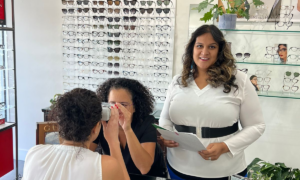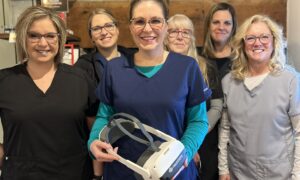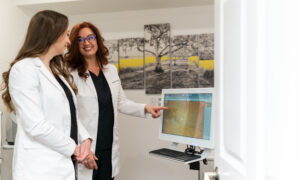Mick Kling, OD
June 19, 2024
As a practice management and transition advisor, one of the most common questions I receive from an eager seller is: “What’s my practice worth?” It’s a fair and important question. It’s also both simple and complicated.
The simple part is that any practice is simply worth what a buyer is willing to pay, and what a seller is willing to accept. The complicated part is there are many variables and emotions involved in the sale of a practice, all of which can have a significant impact on its perceived value.
In this two-part series, we will tackle this important question. In part one, I’ll discuss what you are actually selling (or buying), and in part two we’ll discuss common valuation methodologies and strategies for determining the worth of an optometry practice.
Let’s start with the IRS’s definition of the value of a business. While there isn’t a single publication that specifically defines value, the IRS provides guidelines for fair market value this way:
 This definition certainly leaves a lot of unanswered questions, and doesn’t provide much help in determining what a business is truly worth.
This definition certainly leaves a lot of unanswered questions, and doesn’t provide much help in determining what a business is truly worth.
While one buyer may be willing to pay a premium for a practice because it’s in the perfect location, it may not be worth anything to another potential buyer if the circumstances or opportunity don’t appeal to them. This can leave a wide range of possible offers based on the level of interest of the buyer. At the end of the day, the value of the practice is simply what someone is willing to pay. Period.
What Are You Selling?
Before we can understand the value of a practice, it’s important to understand what is being sold. From a balance sheet perspective, a business is worth its assets (the stuff it owns) minus its liabilities (what is owed in debt).

Essentially, if you were to sell everything, and pay off all the debt, it’s what’s left over.
However, since most buyers will likely not be assuming the liabilities of the business, the question then becomes what are the assets worth? Before we can answer that question, it may be helpful to get a better understanding of the assets of an optometry practice.
Assets can be thought of as anything of value. They generally fall into two categories: tangible assets and intangible assets. Tangible assets represent those things that you can touch, while intangible assets represent the value of things you can’t touch.

Tangible Assets
Tangible assets are usually valued based on either their “Book Value” or “Replacement Value.” Book Value refers to the value of the asset on the company books. That is, the accounting value after depreciation (loss of value over time) is taken into consideration.
Other Articles to Explore
The limitations of using book value is that a piece of equipment, for example an OCT, may have a useful life that exceeds the depreciation schedule (usually five years) from an accounting standpoint. Even though it may be fully depreciated “on the books,” it still obviously has value to the practice.
The other strategy for valuing tangible assets is to use Replacement Value. Replacement value represents the actual cost to replace the asset at fair market value. It’s important to remember that a five-year-old OCT is not worth the same as a brand new one, therefore, you would use the actual cost to replace the instrument if it were in the same condition.
There is, of course, significant variability in the cost of used equipment, however, this may still represent a more realistic measure of its value.
Intangible Assets
Intangible assets represent the non-physical assets (things you can’t touch) in and related to the practice and contribute significantly to the worth of a business. Unlike tangible assets like inventory, supplies, equipment, etc., intangible assets are often challenging to value because they don’t exist physically, making their worth highly subjective. This can make landing on an agreed-upon purchase price tricky for both buyers and sellers.
Here is a list of some of the elements that may make up the intangible assets in a practice and play an important role in determining value:

Goodwill. The Glue to Value
Goodwill is an intangible asset that represents the price paid for a business over and above the fair market value of its tangible assets. It usually represents the largest portion of the value of an optometry practice. Goodwill includes the positive reputation, customer loyalty and perceived value associated with the practice’s brand, relationships and standing in the community.
Since you cannot touch and feel goodwill, sell it online, or purchase it on Amazon, it is very difficult to value. Goodwill is important because it’s the glue that holds the value of a practice together. It’s the premium that a buyer may be willing to pay for your established business beyond the value of the tangible assets.
These intangible assets represent the systems and protocols of the practice, the office culture, patient loyalty, location, revenue stream, future profits, willingness to cooperate and the seller’s promise not to compete with the buyer after the sale of the practice.
For sellers, your reputation in the community contributes significantly to goodwill and is important in establishing the value of your business. Taking the time to review social media and reputation sites is critical for establishing a sense of what others may think of your business. And you can bet a savvy buyer will do the same.
Poor Yelp and Google reviews yielding a pattern of customer service issues, negative office culture, poor communication and lack of transparency all have a negative impact on the value of the practice.
Why It’s Important To Understand the Difference
You might be wondering why even bother with understanding the difference between tangible and intangible assets. In short, the answer is taxes.
The IRS will require both buyers and sellers in a practice sale to agree on the value of the tangible assets separately from the value of the intangible assets. With an asset purchase, this is called “allocation of the purchase price.”
According to IRS rules, there are seven asset classes in a business acquisition, but for the purposes of this discussion, we’ll only need to remember the two broad categories: tangible and intangible assets.
Since there are different tax implications for each asset class, both buyer and seller will be required to file IRS Form 8594 Asset Acquisition Statement which classifies these assets into one of the seven categories. As you might imagine, what is good for the buyer is not necessarily good for the seller, therefore sellers (and buyers to a lesser extent) will need to consider this early on in the negotiation process.
Both buyer and seller must submit the same information to the IRS. In other words, the buyer cannot submit an allocation of the purchase price that differs from the seller.
In most cases, the value of goodwill (intangible assets) represents the greatest value, and simply comes down to subtracting the tangible assets from the purchase price and allocating the balance toward goodwill. Imagine throwing all the tangible assets in a pile in the middle of the reception area. These assets would likely account for less than 30 percent of the typical selling price of an optometry practice.
Sellers will want a larger portion of the sale price to be allocated toward goodwill since these assets are taxed as long-term capital gains, while tangible assets are taxed as ordinary income, which for most, is at a higher tax rate.
For buyers, allocating a larger portion of the purchase price toward tangible assets is beneficial (in most cases) since these assets can be depreciated more quickly than intangible assets. These are complicated issues with tax implications, so always consult a qualified attorney and tax specialist to understand your particular situation.
Understanding the difference between tangible and intangible assets is crucial for understanding the value of a practice. While tangible assets provide a measurable foundation, the intangibles, such as goodwill and reputation, hold the most value. These elements, though difficult to quantify, are fundamental in shaping value.
When considering, “What’s my practice worth?,” remember to consider both sides of the equation – tangible assets and intangible assets – for a comprehensive assessment of your practice’s value.
In part two of “What’s My Practice Worth?,” we’ll discuss common valuation methodologies and strategies used by valuation specialists and practice appraisers for determining the worth of an optometry practice.
M ick Kling, OD, is the president of Impact Leadership and the founder and CEO of Invision Optometry in San Diego, Calif. Dr. Kling is also the Practice Management and Transition Advisor for Vision Source. To contact him: dr.kling@invisioncare.com
ick Kling, OD, is the president of Impact Leadership and the founder and CEO of Invision Optometry in San Diego, Calif. Dr. Kling is also the Practice Management and Transition Advisor for Vision Source. To contact him: dr.kling@invisioncare.com


























